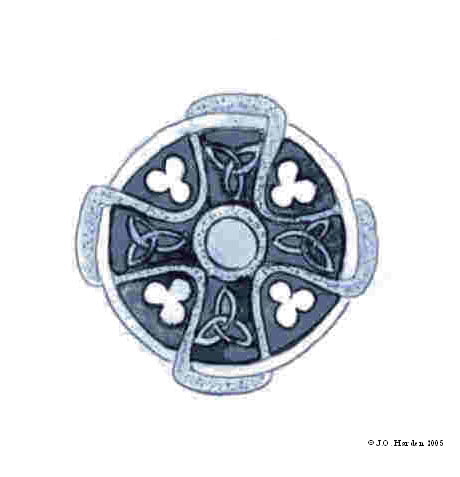
Henry VIII took his most decisive step against the power of the church in 1538, when he began the Dissolution of the Monasteries. Apart from his need to establish the power of the king over the church, the monasteries were rich and Henry needed money. Initially the smaller religious houses were confiscated or wrecked, but subsequently the larger, richer houses suffered a similar fate. Some were sold to wealthy gentry for use as country estates, others were ‘gifted’ to loyal supporters, while much of the wreckage of the buildings became a source of cheap building materials for local inhabitants.
One of the richest monasteries in the land was the Benedictine nunnery at Wilton Abbey. Founded early in the 9th century, enlarged in 871, it became one of the great religious foundations of England. Although it had apparently been in financial difficulties at various times, its income in 1535 had been the fourth highest in the country. Wilton Abbey was obviously a sitting target for a cash strapped monarch. Inevitably it was closed down and surrendered to Henry VIII on 25 March 1539.
As abbess of Wilton, Cecily Bodenham held an entire barony from the king, which was a privilege shared by three other English nunneries: Shaftesbury, Barking and St. Mary, Winchester.
During her tenure, she leased Fuggleston Manor, held by Wilton Abbey, to a relative, Henry Bodenham. She was compliant with the King’s policies during the Dissolution of the Monasteries;[3][unreliable source] and when Wilton Abbey suffered the same fate as the other religious houses, she willingly surrendered the abbey to the King’s commissioners on 25 March 1539. At the time she claimed to be “without father, brother, or assured friend”.[3]
A nun at the abbey wrote in her diary complaining of Cecily Bodenham’s ready acquiescence to King Henry’s Acts with this passage:
- “Methinks the Abbess hath a faint heart and doth yield up our possessions to the spoiler with a not unwilling haste…Master Richard Neville, the Sub-Seneschal, informeth me that His Majesty’s commissioners do purpose to reward her with a fair house at Foffaunt and a goodly stipend withal.”[3]
Cecily was amply awarded with a generous pension of £100 and a property at Fovant in Wiltshire, with an orchard, gardens, three acres of meadow and one load of wood per annum from Fovant Woods. About ten of the nuns from Wilton went to live with her at the Manor Home Farm. She paid for the construction of the south aisle of St. George’s Church.
Cecily Bodenham died sometime after 1543, when her will was made.[2]
In 1541 Henry given Wilton to William Herbert, one of his most influential Welsh supporters, who became Earl of Pembroke in 1551, taking the title from his ancestors, the Earls of Pembroke of the first creation. The original Wilton House, using much stone from the ruined Abbey, was completed around 1550 and has remained in the Herbert family ever since. Each succeeding Earl of Pembroke, through alterations and additions, has put his individual stamp on the house that, although open to the public, is still the private home of Henry Herbert, the 17th Earl of Pembroke.
Click on the link below to find more information on the Reformation:
The reformation as it affected the village
J.O.H.
April 2006Bodenham
